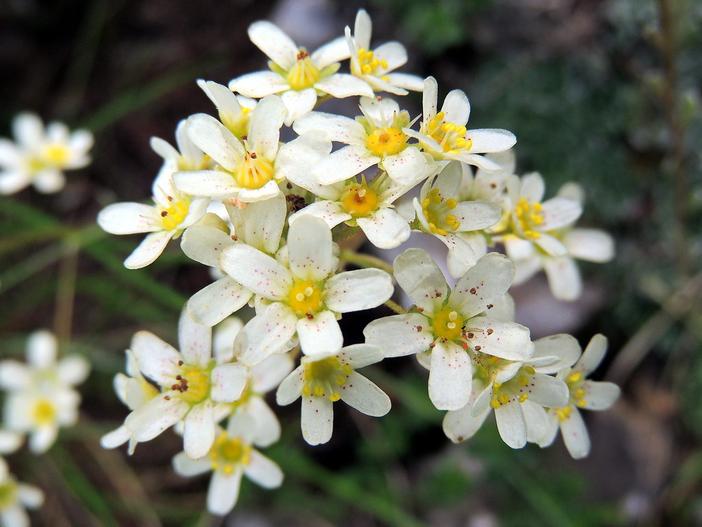White Mountain Saxifrage
(Saxifraga paniculata)
White Mountain Saxifrage (Saxifraga paniculata)
/
/

xulescu_g
CC BY-SA 2.0
Image By:
xulescu_g
Recorded By:
Copyright:
CC BY-SA 2.0
Copyright Notice:
Photo by: xulescu_g | License Type: CC BY-SA 2.0 | License URL: https://creativecommons.org/licenses/by-sa/2.0/ | Uploader: xulescu_g | Publisher: Flickr





















Estimated Native Range
Summary
Saxifraga cuneata subsp. paniculata, commonly known as White Mountain Saxifrage, is an evergreen perennial herb. It is native to the high mountain regions of Spain. Saxifraga paniculata thrives in alpine and subalpine habitats, often found in rocky crevices and limestone scree. This species typically forms low, cushion-like mats with rosettes of fleshy leaves. The flowering stems reach 10–30 cm in height, bearing clusters of star-shaped white flowers, approximately 1 cm across, with purplish or red dots. The blooming period extends from mid-to-late June to early August, with the flowers being perfect, containing both stamens and carpels.
White Mountain Saxifrage is valued for its resilience to harsh conditions, such as its ability to close leaf rosettes to prevent photoinhibition and dehydration. Its ornamental appeal lies in its attractive foliage and delicate flowers, making it a popular choice for rock gardens, alpine houses, and as ground cover in well-drained areas. It requires sharp drainage in alkaline or neutral soil and prefers part shade, although it can tolerate full sun in cooler climates. While it is generally hardy, it is susceptible to root rot in excessively wet conditions, particularly during winter. Cultivars with the Royal Horticultural Society’s Award of Garden Merit include ’Southside Seedling’ and ’Winifred Bevington’, among others.CC BY-SA 4.0
White Mountain Saxifrage is valued for its resilience to harsh conditions, such as its ability to close leaf rosettes to prevent photoinhibition and dehydration. Its ornamental appeal lies in its attractive foliage and delicate flowers, making it a popular choice for rock gardens, alpine houses, and as ground cover in well-drained areas. It requires sharp drainage in alkaline or neutral soil and prefers part shade, although it can tolerate full sun in cooler climates. While it is generally hardy, it is susceptible to root rot in excessively wet conditions, particularly during winter. Cultivars with the Royal Horticultural Society’s Award of Garden Merit include ’Southside Seedling’ and ’Winifred Bevington’, among others.CC BY-SA 4.0
Plant Description
- Plant Type: Herb
- Height: 0.8-1 feet
- Width: 0.32-0.4 feet
- Growth Rate: Slow
- Flower Color: White
- Flowering Season: Summer
- Leaf Retention: Evergreen
Growth Requirements
- Sun: Part Shade
- Water: Medium, High
- Drainage: Fast
Common Uses
Bee Garden, Deer Resistant, Groundcover, Rock Garden, Showy Flowers, Street Planting
Natural Habitat
native to the high mountain regions of Spain
Other Names
Common Names:
Scientific Names: , Saxifraga paniculata, Saxifraga cuneata subsp. paniculata, Saxifraga fragilis subsp. paniculata, Saxifraga trifurcata subsp. paniculata,
GBIF Accepted Name: Saxifraga cuneata subsp. paniculata (Pau) Mateo & M.B.Crespo